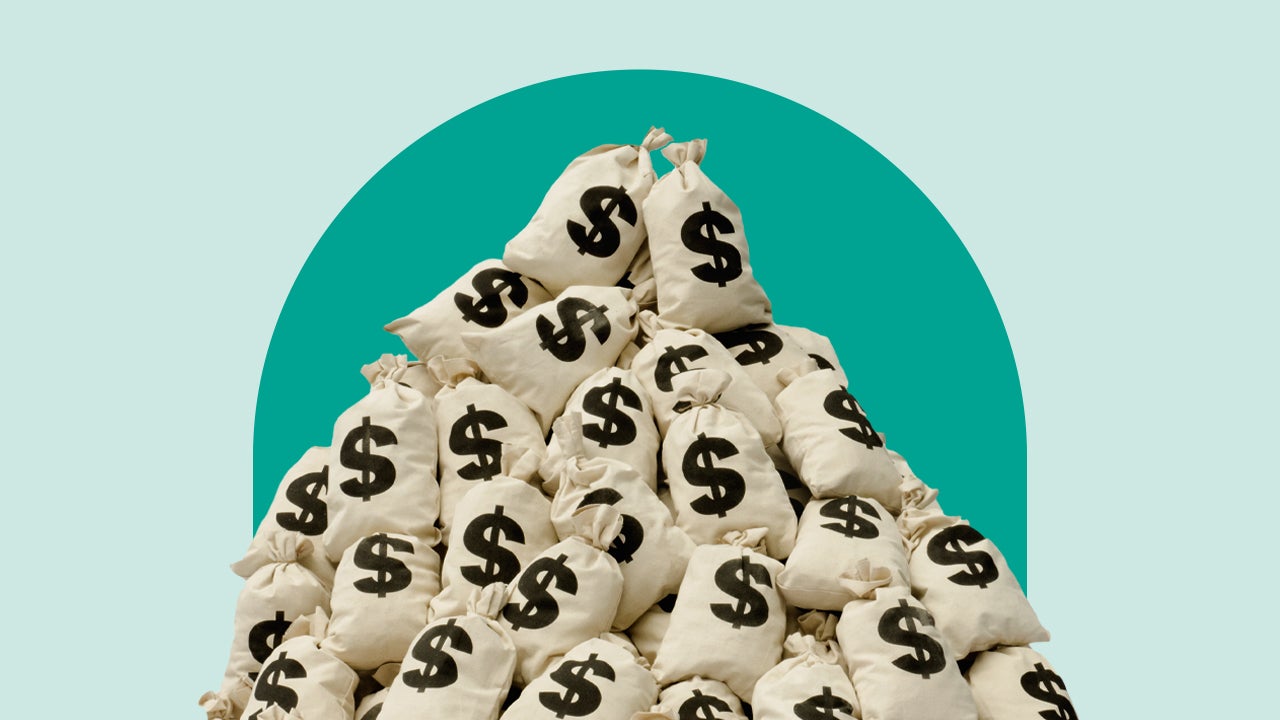Should I get a personal loan? 9 top reasons to consider

Key takeaways
- The most common reason to take out a personal loan is to consolidate debt.
- Fast funding turn times make personal loans a good choice for emergency expenses.
- Gives you a predictable monthly payment to finance home improvements, wedding expenses or other large purchases.
Personal loans can be used for just about any purpose. With lower interest rates than credit cards, they’re a popular choice for debt consolidation.
They also provide a predictable monthly payment to finance large expenses or fast funds for emergencies – sometimes the same day you apply. Knowing the top nine reasons for personal loans can help you decide if you’d benefit from applying for one.
9 reasons for personal loans
Personal loans’ fixed rates and stable monthly payments may be more budget-friendly than other types of debt. Quick funding is also a plus if you’re facing an unexpected expense you need to pay for right away.
Before shopping for a personal loan, consider these nine reasons it might be a good fit for you. Be sure to weigh personal loan pros and cons before you make a final decision.
1. Debt consolidation
Debt consolidation is one of the most common reasons for taking out a personal loan. With the average personal loan interest rate just above 12 percent (compared to 21 percent average credit card rates), you could save hundreds or thousands of dollars.
Two factors help personal loans save you money. Personal loan rates are fixed, making your payment predictable compared to variable credit card rates. You also have a definite payoff date because personal loans are paid in equal installments, with terms typically ranging between one and seven years.
Debt consolidation also simplifies debt management. Instead of making payments on multiple other loans, you combine them into one loan with one monthly payment.
2. Home improvement projects
Homeowners who don’t want to borrow against their home’s equity can use a personal loan for home improvements. It’s also a good fit for borrowers who lack enough equity to get a home equity line of credit (HELOC) or home equity loan. Some lenders even offer loan amounts as high as $100,000 for major renovations.
Unlike home equity products, personal loans often don’t usually require you to use your home as collateral. Bad credit personal loan options are also available for borrowers with scores below the 620 minimum standard set by most home equity lenders.
Personal loan funding turn times are usually quicker with less paperwork hassle than home equity financing, making them a better way to finance small renovations or repairs. Interest rates for excellent credit home improvement borrowers may be as low as home equity loans,
although the repayment terms will be shorter.
3. Emergency expenses
Borrowers often turn to a personal loan to pay for emergencies. Some lenders even offer same-day funding if you apply early enough on a weekday.
That can make it a good match for a surprise medical bill such as an urgent care deductible. If you’re stuck with an expensive car repair bill, the fast turn time may get you on the road without depleting your savings account.
Emergency personal loans are much faster alternatives to home equity financing if you have a household crisis, such as a burst water pipe or a roof leak. Since the loan isn’t secured by your home, the approval process is much faster.
You may opt to split the cost of an emergency expense between a personal loan and your emergency savings account. You may sleep better knowing you still have some cash in the account and will have a smaller personal loan balance to pay off.
4. Vehicle financing
A personal loan may be a good alternative to secured financing to buy a car, boat or RV. You’ll avoid the high-pressure sales pitches from dealership financing companies and can usually prequalify in seconds. You can also choose terms similar to car lenders, ranging from one to seven years.
Since the loan isn’t approved based on the price of the car, you can borrow extra to pay for extras like road hazard kits, boat storage and maintenance fees. But be aware that the more you borrow, the higher your monthly payment and total interest charges will be.
Additionally, since personal loans are unsecured, the vehicle won’t be at risk of repossession if you can’t repay the loan. If you have to sell the vehicle quickly, you won’t have to deal with the paperwork involved in paying off an auto loan.
5. Alternative to payday loans
Using a personal loan instead of a payday loan may save you hundreds of dollars on interest charges if you need some extra cash before your next paycheck. Personal loans also give you more time to repay the balance, with terms generally ranging from 12 to 84 months.
Payday loans have short repayment terms, usually by your next payday or between two and four weeks. This quick turnaround time often forces borrowers to renew the loan if they can’t repay it by the due date.
The annual percentage rate (APR) for a payday loan can be more than 650 percent, depending on your state. But the maximum interest rate on a personal loan is typically about 36 percent. You can see how the two compare by using a personal loan calculator to see the difference in interest costs.
6. Moving costs
Local moving costs average between $883 and $2,563, while a long-distance move costs anywhere from $2,700 to $10,000, according to Angi. If you don’t have the cash, a personal loan may be a cost-effective way to finance moving expenses.
Personal loan funds can pay for moving truck costs, new furniture, cross-country vehicle transportation and moving supplies. Using a personal loan for moving costs can also help you stay afloat while you wait for your first paycheck after a job relocation.
This way, you can keep your savings for potential utility deposits, grocery stock-ups or cleaning supplies for your new home.
7. Large purchases
If you need several thousand dollars to pay for items like a washer and dryer, four new tires on your SUV or a new laptop for work or school, a personal loan may be worth considering. Though you’ll have to pay interest and potential fees, you can avoid depleting your savings or using your credit card.
You can even make several large purchases at once and budget for them with one fixed-rate personal loan payment. For example, you could use a personal loan to replace multiple kitchen appliances during a remodel.
8. Wedding expenses
The average couple will spend around $33,000 on their wedding in 2024, according to Zola. If you don’t have that kind of cash saved up, choosing a personal loan can give you the funds to cover the costs now and repay them later.
A personal loan can be used to pay for big-ticket wedding costs like the venue and bride’s dress, or for smaller expenses like flowers, photography, the cake or a wedding coordinator.
But remember that a luxury wedding is a want, not a need. Don’t let your vision of the perfect day drive you to borrow more than you can afford to repay. Make sure you have a money and marriage talk before the big day.
9. Vacation costs
According to a study by Budget Your Trip, the average cost of a one-week vacation is up to $2,268 for one person. A personal loan may give you the funds to splurge on a honeymoon, go on a trip to Europe after you graduate or celebrate a special anniversary getaway.
However, we generally recommend against using vacation loans. This kind of debt can weigh your budget down for years after your vacation is nothing but memories.
When to get a personal loan
Lenders consider factors like credit score, annual income and credit history when approving a personal loan. If you’re strong in these categories, you are also more likely to be able to handle a personal loan. You’re also more likely to get a better rate.
A personal loan could be a good tool to fund your next purchase, project or life event if you meet the following five criteria:
- You have a very good credit score. According to the FICO credit model — the scoring that most lenders use — a very good score is anything above 740. While lenders may accept a lower score, the rates for fair to bad credit can easily run into the 20 or 30 percent range. Combined with short terms, the payment may not make sense for your budget.
- You have an established repayment history. Because most personal loans are unsecured, your payment history is especially important. Your credit report includes every reported payment you’ve made, missed or were late on for the past seven years. If your credit history is short or poor, a lender may deny your application, offer you higher rates or reduce the amount they lend you.
- You have a low debt-to-income ratio. Your debt-to-income (DTI) ratio is the percentage of your monthly debt payments divided by your gross monthly income. Lenders often see higher DTI as a red flag that you might not be able to handle the payment on a new loan. They may charge higher interest rates or reduce the amount you can borrow if the DTI is too high.
- Your annual income is steady. Some institutions require a minimum income for approval, but most just require proof of a stable income and employment history. Salaried and full-time hourly income is likely to lead to a faster and easier approval. Generally, the higher your income, the more likely you are to get approved for.
You pick a lender that offers prequalification. Prequalification allows you to check your predicted rates and approval odds before applying. Prequalifying doesn’t impact your credit, which is especially important considering rates can range from just below 7 percent to over 35 percent. Even a small drop in your score due to a hard inquiry could push you into a higher personal loan interest rate offer.
When not to use a personal loan
While a personal loan is a useful tool to finance larger or unexpected expenses, there are some situations where an alternative to a personal loan might be better.
- Your credit score is poor. The lower your credit score, the higher your interest rate could be. If you have poor credit and truly need a loan, shop around for lenders that specialize in bad credit loans.
- You can’t afford the monthly loan payments. Assess your spending plan and take an honest look at your debt habits to determine how much you can afford to pay on a loan. If you’re on a tight monthly budget, or can barely afford the minimum payments on your credit cards, a personal loan may not help. Defaulting on a personal loan can have serious consequences that you’ll want to avoid.
- You can qualify for better financing options. A personal loan also may not make sense if it’s being used for a purchase that would qualify for a better loan type. Auto, student and mortgage loans often come with lower rates or longer terms and more affordable payments.
Bottom line
A personal loan gives you the flexibility to finance small expenses or significant projects with very little qualifying paperwork. They are also helpful in a cash crunch, with money available in most cases within a business day of approval.
An added perk: You don’t need to risk losing your home or car since most personal loans are unsecured. A personal loan may be worth considering if you receive a consistent paycheck and have room in your budget for a set payment over the next several years.
You may also like

8 types of personal loans and their uses — plus 5 to avoid

8 tips for paying off student loans fast

How to get a personal loan with bad credit

5 ways a personal loan could help you save money



